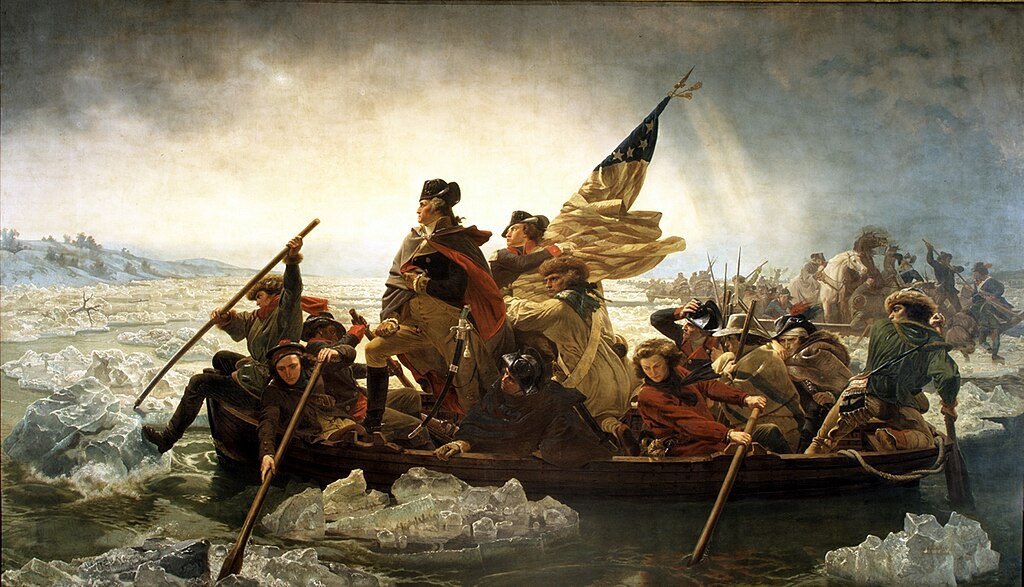I came across an article recently with the curious title, 10 Things About Canada I Didn’t Know, and indeed I learned ten new things too. I found the third fact on the list the most interesting. It claimed:
“Shelburne, Nova Scotia is said to have been the fourth-largest town in North America at one point and has the third-largest natural harbour on the continent.”
It’s my natural inclination to see what more I can discover whenever something fascinating like this arises. The Shelburne item seemed so odd that I simply had to know more.
Shelburne looks like a pleasant enough place along Nova Scotia’s Atlantic coast (map). However it had fewer than two thousand residents in 2006. So clearly something happened early in its history. Somehow it declined from the fourth-largest town on the continent to its current bantamweight configuration.
Trouble in the Colonies

The story actually traces back to troubles in another part of the continent in the late Eighteenth Century. At that time, thirteen colonies struggled for their independence from Britain. Those thirteen stated boldly and with peril to those who professed their convictions that,
“We hold these truths to be self-evident, that all men are created equal, that they are endowed by their Creator with certain unalienable Rights, that among these are Life, Liberty and the pursuit of Happiness.”
In so doing, they declared their independence from British rule.
However, a minority of people in these colonies remained loyal to the Crown. Life became difficult and uncertain for many of them as war ebbed and flowed across the colonies. Neighbors and sometimes even family considered them enemies. Eventually the Revolutionary armies gained the upper hand at Yorktown, and then came the Treaty of Paris. Many of the loyalists left the newly formed United States forever. The British government actively courted them and offered incentives for them to move to Canada.
Resettlement

Perhaps ten to fifteen thousand loyalists resettled in Shelburne, arriving primarily from the Middle Colonies and New York City. They converted Shelburne from a sleepy village into a bustling seaside town by weight of their sheer numbers.
This was the town’s high water mark. The population dropped sharply in the following decades. I couldn’t corroborate that it made Shelburne the fourth largest town in North America as it claimed. However, it was indeed quite a bit larger than what exists there today. Actually it might not be all that outlandish considering that Boston may have had only sixteen thousand residents at the time.
It does have a nice harbour too, and a large one, so maybe it’s the third largest in North America. I dunno. Actually I stopped pursing that line when I stumbled across something much more interesting. The Historic Shelburne website included a brief comment, almost a throwaway statement really, that completely took me aback; “As a result of this migration, nearby Birchtown became the first free black settlement in Canada.“
Freedom for Former Slaves
From there I first became acquainted with the Black Loyalists. Somehow one doesn’t hear much about the people of African ancestry who renounced their subjugation and sided with the British Crown in a bid for freedom. The folklore of the American independence story conveniently glossed over that uncomfortable situation.
The Revolutionaries may have declared that all men were created equal. Nonetheless, they did not extend that philosophy to the fifth of Americans of African descent subjected to the bonds of slavery. However, the British absolutely understood that gaping contradiction. They offered promises of freedom and land to slaves who broke their shackles and joined the loyalist effort.
Lord Dunmore, the Royal Governor of Virginia, pursued this strategy vigorously. He could damage the upstart colonists in a couple of different ways. First, escaped slaves could become a direct military force such as the Ethiopian Regiment. Additionally mass defections could cripple a plantation economy dependent on slave labor and thereby sap the resources of the rebellion.
The full completion of the plan depended upon a British victory, and of course that did not happen. Most of the Black Loyalists fell back into subjugation as the war approached its conclusion. A small but lucky few — perhaps fewer than ten thousand — actually avoided recapture and attained freedom after the war. These fleeing former slaves resettled in places such as Florida and the West Indies, along with Nova Scotia and New Brunswick in British North America.
The Birchtown Settlement

Some of those black loyalists settled in Birchtown, just outside of Shelburne (map). It became the largest settlement of free people of African descent outside of continental Africa itself. The population quickly swelled to 2,500 inhabitants. Few of these people ever received their promised land grants, whether due to racism, bureaucratic fumbling or a combination of both. It’s also telling that Black Loyalists did not settle directly in Shelburne as did their white counterparts.
In any case, today the National Historic Sites and Monuments Board of Canada records the special history of Birchtown, and its settlement by the Black Loyalists. Birchtown provided a sanctuary for those fortunate enough to grab their freedom eighty years before the American Civil War.

Leave a Reply